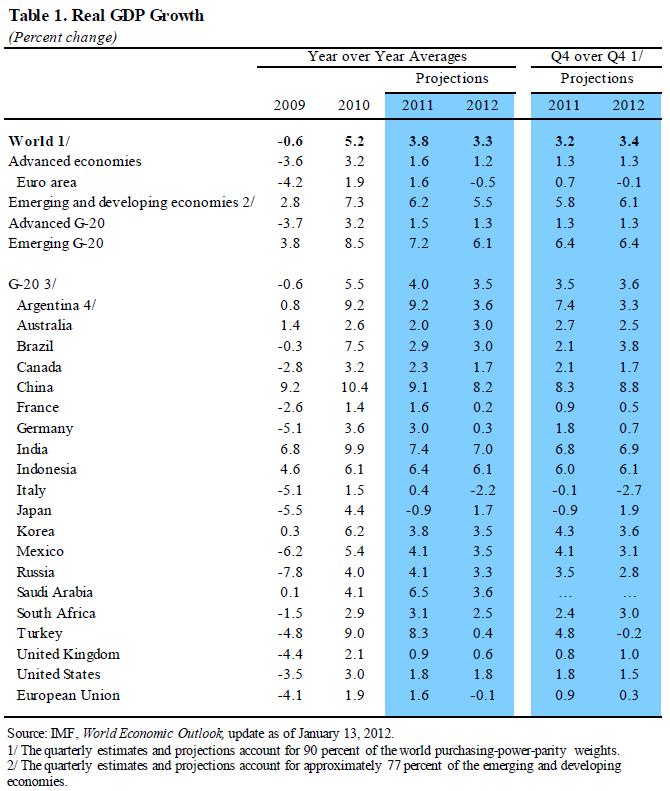I mentioned recently in my post on the IMF half yearly WEO that the IMF needed to catch up to reality in its forecasts for Australian growth and overnight they did so in a Briefing Note for the G20:

The 2012 figure has been cut by 10% 0.3% to 3%. As the AFR points out:
In their most recent forecasts, the RBA and Treasury projected annual growth would average 3.25 per cent through this financial year and 2012-13 – a rate the central bank said was consistent with gross domestic product growing by 4 per cent in calendar 2012.
So, pretty good in the circumstances and not unrealistic given the growth rates in the Pilbara and North Queensland, with the risks skewed to the downside for everyone else. In the same article Treasuer Wayne Swan goes on to argue that:
I just think there’s just a tendency out there in our public discussion to focus far too heavily on all the risk being on the downside,” he told The Australian Financial Review. “There’s no doubt that the situation in Europe is serious. There’s no doubt it is dragging on global growth, but the fact is we’ve been ahead of the curve in terms of the forecasts we’ve done so the figures we put out last November basically reflect the downgrade the IMF is announcing now.
“When we talk about growth here of 3 or 4 per cent next year, it has already factored in recession in Europe.
“A lot of that gets lost in the discussion where somehow people think, ‘oh well, it’s got even worse again’, when in fact in terms of our forecasts we’ve already taken that into account.”
The Treasurer has become concerned Australians may be talking themselves into lower growth, particularly after last week’s coverage of labour-force data, which highlighted the fact that 2011 was the worst year for job creation in two decades.
“The public discussion of those numbers degenerated into a line that somehow levels of employment in Australia were like they were 20 years ago in the early 1990s,” he said.
“It was just farcical the way that degenerated into a talking down of our fundamentals. You’d be forgiven for thinking that somehow, as a result, we had unemployment at European levels.
“Now that doesn’t demean the fact that there are stresses and strains which are certainly producing challenges in sectors like the automotive and tourist sectors, but at the end of the day unemployment is at 5.2 per cent and there is a record of job creation over a four-year period in this country, which is unequalled in any country in the world.”
“I think we should be having a more informed discussion and a more realistic discussion about these fundamentals, because I don’t think it is in the interests of many in the business community that some of these fundamentals are so distorted in our public debate,” he says.
I note that, as predicted, “mining boom” rhetoric has disappeared from the Treasurer’s discussions of the economy. In its place we find a Pascoe-like dressing down and exhortation to get off our arses and spend. It’s only my opnion but the Treasurer seems very out of step with the zeitgeist (as does the Pascometer). I wonder if he wouldn’t be better served by a bit of honesty. Things are difficult in the new normal. Folks don’t want to borrow so much. The banks don’t want to pass on rate cuts. Non-mining states are struggling.
Then again, maybe not.

